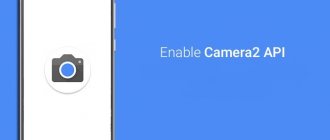After complete confusion in the names over the previous couple of years, HTC stopped confusing users and began cleaning up the lineup. Only three models were released in the new season, and One V is the youngest among them. The price gap compared to the older model is twofold, and I want to understand: are HTC engineers and designers able to maintain adequacy for that kind of money or, on the contrary, is this where they show the greatest adequacy?
⇡#About APPEARANCE
The design of the One V cannot be called innovative - traces of both Hero and Legend are visible here, adjusted for more noble materials. The body is a solid piece of aluminum with inserts made of Soft Touch plastic, pleasant to the touch and not particularly easily soiled. Only two physical keys were left alive - power and volume control, the rest are touch sensitive. Not everyone will like this approach, but this is one of those trends that you can easily overcome - at this point you can remember that Android 4.0 initially does not include separate keys at all, only on-screen ones. But in general, the device looks nice and expensive, even the texture is a bit like One S,
. As for the overall proportions, the One V looks more like a slightly larger Sony [Ericsson] Xperia Ray and fits just as comfortably in the hand.
HTC One V - Review of a cool smartphone
The end of April, a typical St. Petersburg spring. It's plus five degrees outside and there are dust storms. I was just recently finding out what our average annual temperature is. It turned out to be plus four, a whole degree lower.
Call. I get off the bike, take off my gloves, take out the HTC One V from my pocket and instantly feel - what a cold Korean Taiwanese deer you are! Metal, however. And I didn’t like this feeling. It's probably nice in the summer. But how long have we had this summer? Last year it actually fell on Thursday. And in winter (autumn and spring), it’s probably better to use a headset with this smartphone, so as not to freeze your paws on it.
However, excessive coldness in non-summer seasons is the only serious “fairy” on my part towards the HTC One V. Well, and also leisurely, of course. When the call log opens, it takes seven to eight seconds, which is at least three to four times slower than I would like. No, don't think so. It doesn't always open that slowly. Only when the opener is in a hurry somewhere.
Brief conclusion
HTC One V is a very stylish, pleasant, high-quality in all respects, metal smartphone, buzzing on the latest (fourth) Android. In terms of iron power, it’s a typical average. The screen is good, but not too big. For my taste, a little leisurely and a little expensive. I don't see any other significant shortcomings.
Unpacking, first use
Equipment
Charger, headphones, USB cord (micro).
Archaeological excavations
HTC One V was announced in February 2012, simultaneously with its “older”, more powerful and expensive brothers HTC One S and HTC One X.
In Russia, on sale, it seems, from April 2nd. The manufacturer's recommended price is 14,990 rubles. In a “gray” version, not certified for our country, you can already find it on sale for a couple of thousand cheaper.
The copy that came into my hands is one of the “gray” ones. But this dullness does not affect its functionality in any way. There are no problems with Russification; it works in our frequency ranges. I don’t know what country the device was intended for. Something Asian, it seems.
Appearance
A narrow, thin, dark block. Almost ordinary. Almost. The lower part is unusual. Added an empty, unoccupied area under the screen and touch buttons. Not only was it added, it was also curved. Thanks to all this, it is easier to get to the bottom of the screen and touch keys if you hold the device in your hand and try to press the keys with the same hand. Appreciated. I can’t say that it was often necessary, but it was.
The device is elegant, metal and very monolithic. Solidity is achieved thanks to a non-removable battery. Since you don’t need to remove the battery, you don’t have to make a removable back cover. They didn’t do it. There is only a detachable lower “tail” (just where the bend is). Below it are a SIM card and a microSD card.
The SIM card here is ordinary (the one that is sometimes called miniSIM), and not microSIM. And this surprised me quite a lot. Obviously, from the buyer’s point of view, changing the SIM card format is a slight hemorrhoid. You need to tear your butt off the sofa of a cozy office chair, stomp to visit the operator, etc. And if you love your client, especially your regular client who is already buying more than one device from your company, it is probably in your interests to minimize his inconvenience. So that he changes the format once and forgets about it for many years... Until Someone and Someone agree on another change of format, on the notorious “nanosimki” (people are itching for them, huh? Soon SIM cards under a magnifying glass will have to be considered).
If you transfer your products to micro-SIM cards, what would be the most logical way to do this? Go to the podium and notify the public in a loud voice: That’s it, from next Friday all our new models will only come with SIM cards of the latest format. What is HTC doing? And HTC is releasing a series of three smartphones, two of which (HTC One X and HTC One S) have micro-SIM cards, and the third, our hero One V, has an old-format SIM card. And where is the logic? No, I believe and hope that it exists. But where?
Sorry, I got carried away with SIM cards. Let's continue.
The body, as I already said, is all metal. With two plastic inserts. The first is the same detachable tail. The second is where the camera and flash are (the upper part of the back surface).
I want to argue separately about the camera location. Mother-mother-mother! The camera is located in the very corner. And when photographing, I had to constantly control myself so as not to cover her peephole with my finger. Because “by default” the middle finger of my left hand was placed right in front of the camera’s eye! I also “thank you” - how convenient - they made a “mark” just for me (whoever knows how to type with ten fingers blindly will understand me; there are, however, marks for the index fingers, but the principle is the same).
The metal part of the device (back and sides) is slightly rough, making the One V non-slip. That is, it falls less often. This is good. On the other hand, this roughness is somewhere literally on the verge of what I can still consider pleasant to the touch. If they were a little overdone, I would simply be unpleasant to pick up the One V. Fortunately, we didn't overdo it. But, perhaps, I recommend that you feel the phone before buying it, just in case. Yes, just in case. Everyone has their own line.
The glass “sticks out” slightly above the body. Somehow a little unusual. It seems that I’ve already gotten used to the fact that the screen (more precisely, the glass covering it) is, in fact, the front edge of the device. And here it is done so that the glass seems to lie on top of the body.
Just a week ago I wrote a review of the One X model and there I cursed at the shutdown button - they say it’s inconvenient, unclear, difficult to press. But in One V this button is just super. Pressing is convenient and obvious. Well done! The volume rocker is made from the same cloth and is also very pleasant.
Screen
In modern times, the screen is small. “Only” 3.7 inches. The resolution is the most ordinary one, 480x800. We probably don’t need to talk about the fact that the screen is capacitive. Yes, that's exactly what he is.
Ten-point multi-touch.
Matrix type? On the Canadian HTC website it is called "Super LCD2". In Russian it is not called at all. There is nothing written on the smartphone box or on the papers either.
The screen is very nice in all respects. Nice colors and all. It can be seen well, viewing angles are excellent.
What is especially valuable in connection with the sudden onset of the warm half of the year is that the screen behaves decently in the sun. Calling and taking a photo is not a problem. But just don’t try to watch the video outdoors. Even in moderately cloudy weather, even at maximum brightness, it was impossible to watch House - the picture was too dark.
As far as I understand, there is no super-hard Gorilla Glass coating on the screen. But whatever coverage there is, it is clearly decent. The screen is in no hurry to become covered with scratches. A week, of course, is not too long. And maybe I'm just being too careful. On the other hand, Gorillas are not the only good glasses in the world. I’ve had Huawei Honor for several months now, and the glass on it doesn’t scratch at all (once, however, it shattered to pieces... But there were no scratches on it before it broke!)
Here the One V screen gets dirty - yes, with all my wide soul. And this stain is wiped off with great difficulty.
Iron
Typical "middle class". Qualcomm MSM8655, one-gigahertz single-core processor, 512 MB of RAM. Judging by the specifications, there are four gigabytes of built-in flash memory, but three are occupied by something important and are inaccessible and invisible to ordinary people. But microSD cards are supported. (Well, yes. If they weren’t supported, who would need a smartphone with that much memory).
In terms of its speed qualities, the One V left a very ambivalent impression. On the one hand, it’s a sin to complain; using the device is comfortable. Again - Teeter - a proprietary HTC toy - works smoothly and beautifully (a stone in the garden of the flagship, One X). On the other hand, an inexpensive Fly Tech smartphone literally just left me. Which “in terms of hardware” is, well, practically a twin of the One V. And in terms of the speed and smoothness of the interface and similar little things, Fly Tech was much more pleasant to me. I find it difficult to say what could be the matter here. Possibly due to the degree of clumsiness of the shells. Like, their HTC Sense can’t stand up to our native SPB Shell 3D!
In terms of the speed of calculating ten million digits of Pi, One V lost to Fly Tech by four seconds (17.63 versus 13.46), and Huawei Honor by eight seconds (9.70). But Angry Birds starts two and a half times faster on it than on the Galaxy Ace.
For more details, see Testing the speed of Android devices: seconds instead of parrots.
One V is quite good at connecting to a computer via USB and at the same time functions perfectly as a flash drive. No problem. Even two flash drives, in fact. Naturally, the microUSB card is visible. And plus a hundred-megabyte piece of built-in memory (sort of, photos are saved there if you forget to insert a microSD card).
Control
The screen is touchscreen, capacitive, of good quality - understandable, standard, expected.
Below the screen there are three touch buttons - “Back”, “Home”, “Applications”. Again, there is no separate “Menu” button, but hurray! - when you long press on “Applications”, it is called “Menu”. Much more convenient than in the HTC One X, where the menu bar in many applications was cut off at the bottom of the screen.
The touch keys are clear and comfortable. There were no problems with them. The percentage of misses is minimal (a stone in the garden for Sony Xperia S).
Battery
The sore spot of most Android smartphones is their batteries. They sit down, contagiously, three times a day. And I can’t help but note that the HTC One V pleased me here - that is, it survived until the evening quite calmly without any additional effort on my part.
The battery capacity is not too large, average - one and a half ampere hours (1500 mAh).
Nevertheless, in the “Dr. House without interruption” mode (half screen brightness, sound in headphones at full volume, Wi-Fi, mobile Internet and other GPS are disabled, modest video resolution 720x400, DicePlayer player) the device lasted for seven and a half hours . More than a worthy result.
The “Endless Ping” test (100% brightness, mobile Internet turned on and the ping program constantly running) gave a result of 3 hours 10 minutes.
“GPS on the windowsill” test (100% brightness, Wi-Fi on). The device was discharged to 38% battery charge in three and a half hours. Then, unfortunately, the test had to be interrupted.
Software
The most modern fourth Android. Branded HTC Sense shell.
Everything is beautiful, only there are no tabs with switches for Wi-Fi and mobile Internet. You need to go into the settings. Not that far - just an extra “click”. But when you turn them on/off frequently, like I do, it gets annoying.
I worked tables - five and exactly five. Neither add nor subtract.
HTC One V like a phone
The sound quality is excellent. I've seen complaints about the speaker's volume being insufficient. Don't know. I didn't think so. True, during the entire week that One V stayed with me, I never took a ride on the metro. So the most reliable test for noise resistance remained unpassed. Screw you.
Skype, if without video, works fine. The video is weird. Well, there is no front camera. This means you need to use the back one. That is, either you see your interlocutor, or he sees you. The video quality is normal, no problem. And I see my interlocutor quite clearly. He did me too. Only for some reason in green. Such a funny picture.
HTC One V as a photo and video camera
Five megapixel camera with flash and autofocus.
I wouldn't call the quality of the pictures magical. But, in principle, many frames can be viewed without shuddering, even on a large monitor.
More examples of pictures.
The control interface is the same as the One X. Two large on-screen buttons. The first is for photos, the second is for starting video recording. Really convenient.
As in One X, there is the possibility of fast burst shooting with subsequent selection of the best shot (including automatic). I found myself using this auto-selection feature almost constantly. Especially in conditions where the lighting is not too bright. And what? The logic is simple. When there is little lighting, three out of four pictures are garbage. Either take pictures with your phone or with a regular camera. Either your hand will tremble, or the camera will focus in the wrong place. As a rule, yes, a stupid little thing. And when you press the button and hold it down for a few seconds, there's a good chance that some of the shots will turn out to be decent, because... at some point in time the hand may accidentally remain motionless. Well, you hope that the software will be able to filter out the movement.
One V can shoot video in 1280x720 resolution. Examples are attached (a minute and a half video, glued together from several pieces).
Piece number one. Bicycle riding. Shooting outdoors, video quality is quite decent.
Piece number two. Fire in the night. Alas, the real one. Kolomyagi are burning out.
Piece number three. My son roller skates, I follow him and take pictures. I don’t know where the phone camera’s focus went. I tried to do a similar shooting a-la video recorder again - I got the same effect.
Piece number four. Figure skating. Shooting indoors, visiting there is so-so. But the video quality is very good.
The camera flash can work as a flashlight - very kind of her. And even the program link that includes the flashlight is preinstalled. Fine!
There is no front camera, as I already mentioned.
HTC One V as a GPS navigator
The GPS “cold start” (when all auxiliary means of determining coordinates are disabled, only the GPS receiver itself works) took about four minutes. Fly Tech, who started next door, completed the same task a minute faster.
On the piece of paper wrapping the box with the smartphone there is the magic word “GLONASS”. Hurray, we are proud. The GPS Test program, at least, really sees these satellites (see picture - with numbers from 70 and more).
To work as a car navigator, for my taste, the screen is a little too small. And as a pedestrian it’s just right.
HTC One V for Internet access
For wandering around websites, the screen size is perhaps a little too small. And for any tweeters, 3.7 inches is quite normal.
The maximum speed that I managed to squeeze out of Megafon’s mobile Internet, according to Speedtest, was two megabits for downloading, a third of a megabit in the opposite direction. For a phone it’s quite normal, I think.
HTC One V as an audio player
The included headphones are regular ones, not BeatsAudio. The sound quality, for my taste, is quite decent, but nothing more. However, I am also a music lover.
HTC One V as a video player
The pre-installed video player is not particularly omnivorous, so I had to immediately look for a replacement. The standard Rock Player Lite and QQ Player I used worked like crap. Either the entire image is in squares, or there is no sound. So, “on the advice of friends,” I installed DicePlayer. And everything became magical. The software, however, is either paid or advertising. Well, little things. But even Matroska 720p (1280×720) runs without problems.
By the way, I was always interested. Are there many people who use a smartphone to watch videos? I can well imagine the situation. I downloaded a video to my smartphone in the morning and watch it on the way to work on the subway or train. But somehow in real life I don’t come across people like this. They are reading more and more. As a last resort, they play with toys.
HTC One V as a toy
The gadget's power was quite enough to launch Shadowgun. Once, however, it fell while trying to start. But after that it immediately started up completely normally. After exiting, you can see the HTC Sense shell restart. Apparently, the toy does not have enough RAM and has to unload the shell to launch it.
There is even more power for Birds and other Osmoses.
HTC One V as an ereader
Apart from the fact that it is a little small and that the screen traditionally glares, there are no comments. I read the next few dozen pages of the next book on the next smartphone and was, on the whole, satisfied. In terms of reading comfort, of course, it’s not E-Ink, but it’s quite decent.
Little things
The first thing the One V told me after turning it on was that there was a system software update to version 1.58.707.4. Updated. It seems like nothing is broken.
With the “tail” (the cover under which the SIM card) removed, the device categorically refuses to catch the net. It looks like there is an antenna in the tail.
Speaking of the antenna. “Dead Grip” was indeed watching. If you carefully grasp the “tail” of the smartphone with your palm, the signal strength (both Wi-Fi and telephone) drops. But I couldn’t achieve this for the signal to disappear completely.
Glitches
Glyukov did not observe.
Demonstration of work
Total
HTC has made a pretty decent device. I can recommend the One V for purchase with a clear conscience. And the price is quite reasonable and the quality is excellent. But. But I won’t change my Huawei Honor to HTC One V. Fortunately, it’s faster and cheaper. And you can install Android 4 (if only you could get around to it...) And just subjectively, I like Honor more (well, yes, the sandpiper praises his swamp, Honor was bought with his own money, and the One V was just visiting for a week ).
Huawei Honor and HTC One V
But the One V still feels better in the hand than the Honor. Eh.
Nine points out of ten possible.
The HTC One V smartphone was provided to us for testing by the St. Petersburg store MobiShop. Where it is currently (May 4, 2012) sold at a price of 12,590 rubles.
⇡#About SCREEN
Here's one slightly less bright side of the One V's design: the plastic coating of its screen gets covered in fingerprints hellishly quickly, even if you constantly wash your hands. These prints are also very difficult to wipe off even with a special microfiber cloth. This is very annoying indoors, but outside when sunny weather sets in it looks completely dull.
Otherwise the screen is very good. The device, which, we recall, is half the price of the flagship One X, uses a top-end Super LCD 2 matrix, which differs from the same AMOLED (according to the developers) in better brightness, color gamut and viewing angles, and in addition, the absence of any PenTile- tricks (only full RGB!). Indeed, if the One V's screen is given a good wipe down, the image looks very nice, and the Spyder4 colorimeter shows an impressive 369 cd/m2 brightness, 866:1 contrast ratio and a color gamut of 97% sRGB and 74% Adobe RGB for a mid-range smartphone.
⇡#About INTERIOR
Recently, the dispute between Windows users and robotic ones has begun to surpass in intensity even the annoying Android vs. iOS. One of the most frequently used arguments in this dispute by the Redmond team was the phrase: “Even though our hardware is weaker, the system turns faster on it.” The argument as a whole is not without foundation, but the One V from this point of view is an interesting experiment, because the hardware inside is exactly what Microsoft prescribes for all current WP7 devices, except that the MSM8255 chip's CPU runs at 1 GHz instead of 1.4 GHz .
| HTC One V specifications | |
| Screen | SuperLCD 2, 3.7 inches, 800×480, capacitive |
| CPU | Qualcomm MSM8255 1 GHz + Adreno 205 |
| Memory | 512 MB RAM 4 GB built-in + microSD |
| Wireless network | EDGE (850/900/1800/1900)/HSPA+ (850/900/2100) Wi-Fi 802.11b/g/n A-GPS+GLONASS Bluetooth 4.0 |
| Sensors | Accelerometer, gyroscope, light sensor, digital compass |
| Camera | Main: 5 MP, 28 mm optics, ƒ/2.0 LED flash, video recording up to [email protected] fps |
| Battery | 1500 mAh/5.55 Wh |
| Dimensions, mm | 120,3×59,7×9,24 |
| Weight, g | 115 |
Deviation from Microsoft standards is allowed only in the permanent memory - it is only 4 GB, of which only a measly 100 MB is available to the user when connected via USB in disk mode, where the camera stores photos and videos in the absence of a memory card. By the way, about the card: there is a microSD slot (hello to everyone who thought that ICS would not support it) for modules up to 32 GB. The card itself is not included in the kit, which is for the best - the buyer knows better how much he needs.
Advantages and disadvantages of the One V phone
The dimensions of the HTC One V are 59.7 mm wide, 120.3 mm long and 9.2 mm thick. With such dimensions it is convenient to operate the device with one hand. In addition, the weight of the device is about 115 g. Even if you operate the device with one hand, its weight is almost not felt.
If we evaluate the overall ease of use of the phone taking into account the size and weight, then there will be no problems with everyday use.
The smartphone is equipped with a single-core Qualcomm Snapdragon S2 MSM8255 processor, which is made at 45 nm. technical process.
The smartphone has 512 GB. RAM, which is quite a lot. Cases of memory shortage will almost never happen, so the smartphone is also suitable for multitasking. Even if you frequently switch between many applications, you most likely will not feel the slowdown.
The storage capacity of the device is 4 GB, and if the smartphone is mainly used for correspondence and social networks, then there will be no problems, but if you are going to use it for photography, video shooting and games, you should look at a device of a higher class.
The phone is compatible with SD cards, so you can easily expand its memory. So you probably don't need to worry about storage capacity.
The One V has a medium-sized screen of 3.7 inches. It's fine for general use, but if you want to view photos, videos, and play games, it may not satisfy you.
The smartphone has a high-end display and any graphic content you display on it, including videos and games, will be displayed clearly.
The main camera of the phone has 5.04 megapixels, which should be enough in most cases. However, you may be slightly unsatisfied with the quality of the photos.
The battery capacity of HTC One V is 1500 mAh, which is a typical capacity indicator. Compared to other smartphones, the HTC One V's battery life is average. You don't have to worry about anything during daily use. However, if you spend time surfing the internet or playing games, you might be a little underwhelmed by the battery life.
⇡#About POWER
Let's return to the question from the previous paragraph - does ICS move on one core? It moves, and how, but with two caveats. Firstly, there are occasional small, particularly non-irritating lags here and there. Secondly, for the sake of combining such hardware and Android 4.0, HTC had to accept a number of restrictions, which are discussed below. In general, the combination of MSM8255 and 4.0.3 is quite suitable for casual everyday use.
The results of testing with the usual set of benchmarks are as follows:
| HTC One V | Samsung Nexus S (4.0.4) | |
| SunSpider 0.9.1 (Chrome), ms | 2866 | 2775 |
| BrowserMark (Chrome), points | 74310 | 45120 |
| Linpack (single thread), Mflops | 32,943 | 21,586 |
| Quadrant 2, points | 2208 | 1298 |
| Nenamark 2, FPS | 29,2 | 23,4 |
| Basemark 2.0 Taiji, FPS | 16,31 | 08,5 |
We compared the HTC One V with the single-core (1 GHz Cortex-A8 + PowerVR SGX540 graphics) Samsung Nexus S, which had received a proprietary update to Android ICS quite a long time ago. The HTC smartphone confidently beat its opponent in almost all tests (especially noticeably in graphics tests), but it’s worth remembering that the Nexus S offers much more room for tinkering with firmware, overclocking and various tweaks that significantly improve performance in tests.
Smartphone characteristics
Hardware
CPU
HTC One V
Powered by Qualcomm's Snapdragon S2 MSM8255 processor. This chip is a system on a chip, operating at a clock frequency of 1 GHz. The processor is made using a 45 nm process technology, architecture - ARMv7, graphics core - Adreno 205.
Screen
HTC One V
equipped with a 3.7-inch (93.98 mm) Super-LCD 2 touchscreen. Display resolution is 480x800 pixels, pixel density is 252 PPI. It is capable of displaying 16.7 million colors. The top is covered with protective glass from an unknown publisher, but according to HTC support, the glass is not inferior in strength to its more famous counterpart - Gorilla Glass. But still the scratches remain. The automatic brightness adjustment sensor works well, as does the proximity sensor, which locks the screen during a call.
Battery
HTC One V
Powered by a built-in 1500 mAh lithium-ion battery. In video playback mode at maximum brightness with working wireless modules, the charge lasts for about 5 hours.
Audio
The device comes with support for Beats by Dr. Dre sound. But the set does not include Beats by Dr headphones. Dre.
Camera
The smartphone is equipped with a main 5 megapixel camera that can take photos
with a resolution of 2592 x 1944 pixels and shoot
video
at 1280 x 720 pixels, that is, with 720p quality. There is also an LED flash, autofocus, and face recognition. Allows you to take photos while recording video.
Does not have a front camera.
Memory
The device has 4 GB of memory, about 0.9 GB is available to the user. The device also has a slot for a microSD card and officially supports up to 32 GB.
Wireless modules
The device has built-in wireless data transmission modules:
- WiFi
Frame
What immediately catches your eye is the characteristic curve in the lower part of the body. This can be called the HTC corporate style, which we regularly see in various models (Legend, Hero, Wildfire S).
Software
operating system
The smartphone runs Android 4.0.3 Ice Cream Sandwich.
Interface
HTC One V is equipped with the company's own interface, HTC Sense version 4.0. There are 5 desktops available.
⇡#About the BATTERY
The big joy of the tester is the HTC One V battery. Of course, many will find something to complain about - the volume is not so large, and it is not removable, according to the current fashion... But an honest one and a half (and sometimes two) days of use is not at all uncommon, and even in The AnTuTu synthetic test yielded an impressive 579 points. Well done!
Memory and speed
HTC One V runs on the Qualcomm MSM8255 Snapdragon chipset with a 1-core gigahertz processor and Adreno 205 graphics. In addition, the device has 256 MB of RAM. The lack of performance is not obvious, but is still noticeable. This can be seen from the rare slowdowns in the menu and when working with the browser. But when watching a video this happens much more often. The smartphone cannot adequately display files in Full HD format, which, however, is excusable for a screen with a resolution of 480x800 pixels. HD video runs fine, there are no complaints about its playback.
The smartphone boasts 4 GB of internal memory, of which less than 100 MB is available to the user, as well as 25 GB in DropBox for 2 years. Memory can be increased using microSD memory cards.
⇡#About COMMUNICATION
During the testing process, the radio part of the One V did not cause any unexpected problems - it caught where others caught, and lost contact where others lost. Speeds... The speeds turned out to be typical for Moscow networks; the Wi-Fi module did not stand out in any way (1.5 MB/s in our test with PDF downloading from a local network). The absence of news, as they say, is already good news.
But what pleased me was the speed and reliability of the navigation receiver. With the cellular module turned off, the phone in just over three minutes caught (on the street, of course) a dozen and a half GPS and GLONASS satellites, used more than a dozen and found itself with an accuracy of about three meters. And if there is a cellular connection, the detection occurs almost instantly.
HTC One S specifications
| Processor • Dual-core, 1.5 GHz Operating system Android™ 4.0 with HTC Sense™ 4.0 interface Memory • Total internal memory: 16 GB • RAM: 1 GB Dimensions: 130.9 X 65 X 7.8 mm Weight: 119.5 grams Display: touch S- LCD2 display Size: 4.3 inches qHD (960 x 540) Networks • HSPA/WCDMA (850/900/2100 MHz) • GSM/GPRS/EDGE: (850/900/1800/1900 MHz) • Download speed: up to 5.76 Mbit/ c , download speed: up to 14.4 Mbps GPS: Internal GPS antenna Sensors • Gyroscope • G-sensor • Digital compass • Proximity sensor • Light sensor Connections • 3.5mm stereo audio jack • Bluetooth® 4.0 with aptX ® • DLNA for transmitting multimedia over a Wi-Fi network • Wi-Fi®: IEEE 802.11 b/g/n | Camera • 8-megapixel color camera with BSI sensor, f/2.0 aperture, 28 mm lens, autofocus and LED flash • HD video recording at 1080p resolution with stereo sound • Dedicated image processing chip • Photography while shooting video • Improved image stabilization • 1.3 MP front camera (720p) Battery Rechargeable battery with a capacity of 1,650 mAh Sound enhancement • Proprietary Beats Audio technology Supported audio formats • Playback: .aac, .amr, .mp3, .wav, .wma (Windows Media Audio 9) , SP-MIDI • Recording: .amr, .aac, .mp3, .wav, .wma Supported video formats • Playback: H.263, H.264, MPEG-4, .wmv (Windows Media Video 9) • Recording: MPEG-4, H.263, H.264, .wmv |
HTC One S is a very stylish and thin smartphone in a metal shell. HTC notes that the One S uses a completely new case technology, which makes it much more durable and stable. Specifications are at an average level, more than sufficient for everyday tasks.
⇡#About the CAMERA
Considering the position of the One V in the lineup, HTC is making some pretty big claims about the camera - the aperture is wide (ƒ/2.0), the photocathode has been moved forward (which is good for shooting in low light conditions), and they have a special chip for post-processing... More and the new feature of the One line has not been forgotten - the ability to take photos while recording video (the photo resolution is the same as the video resolution). In general, attention was paid to a different flagship.
The photographs come out... Without catastrophic failures, but nothing special - ordinary photographs from mobile phones. In dark rooms with brightly lit spots (like conference rooms, for example), it turned out to be a mess. In general, the camera cannot be called a strong point of the One V, which salespeople in showrooms will tweet about in every possible way. However, now that Instagram has been released for Android, this is no longer important.
A separate small detail about the video. This is where one of the hardware limitations comes to light - they won’t let you shoot video above 1280x720 at 30 fps. However, this will also work for YouTube: somehow, five years ago, we watched all the jokes in 360p resolution - and nothing, we didn’t die.
⇡#About SOFT
The fourth “Android” - the fourth Sense, HTC decided and began to remake its interface beyond recognition. It turned out beautiful, light, almost airy, but in places it is not so functional - for example, it is impossible to logically explain the disappearance of the tab with wireless interface switches in the drop-down panel - now there is only a button to access the settings.
By the way, the Sense interface has been slightly improved especially for HTC One V. For example, the list of running tasks has lost its “three-dimensional” appearance, as has the weather forecast that periodically pops up on the lock screen. Some restrictions are puzzling - it is not clear why it was necessary to reduce the number of standard wallpapers or make the number of desktops unchanged.
⇡#About SOUND
In the advertising brochures for the new HTC line, a lot of attention was paid to sound - a partnership with Beats by Dr. Dre obliges us to do this. The editors did not find any suitable Beats headphones, but they were not found in the box with the One V either - so testing with regular Monster Cable headphones can be considered quite objective.
So, using the beats switch, which appears in the drop-down panel when playing music, we realized that the effect is mainly to increase the volume and bass. This helps in places, but we didn’t notice any qualitative improvement in the sound and didn’t feel the wow effect. Apparently you have to be a big fan of gangsta rap or jungle to appreciate Beats.
But one really useful music feature is the integration of SoundHound into a standard player. In storage mode, it’s very easy to copy some unknown song from a friend’s computer, which SoundHound will help you recognize.
⇡#About OUTPUT
I didn’t want to part with the phone - HTC has made a nice device that fits well in the hand, pleases with a nice interface and doesn’t slow down in most everyday tasks. In general, there is little that irritates me, except perhaps for the poor screen coating (in the summer this will become an even more serious drawback) and the idiotic virtual keyboard, which can be changed in a couple of minutes. In short, a solid average. A workhorse (sorry, Eldar).
But we started this conversation, I remember, with the topic of money, and we’ll end with it. The fact is that HTC launched the One V at a price of 14,500 rubles, and this is not very good. You don’t have to look at the host of devices on Gingerbread that are sold for about this money, because life with Ice Cream Sandwich is infinitely better and more fun. But the One V has one problem, and it's called Huawei Honor. This device is not without its drawbacks, but inside it has a quarter more capacious battery and a Qualcomm MSM8255T processor overclocked to 1400 MHz.
For some time now, Honor has also been running Android 4.0.3, which is displayed on a slightly larger 4-inch screen. The Chinese, who are prone to price shamelessness, offer Honor on every corner, thousands on average three cheaper, which cannot but make one think about the bloody meat grinder that the business of producing Android phones has finally turned into. The starting price tag of almost 15 thousand hangs the generally successful One V above its very knives. True, the real retail price of One V in many stores is already, as usual, lower than the recommended one. So all is not lost.
Results
The cost of the most affordable HTC smartphone from the new One line is 3,000 hryvnia. For this money it is quite possible to find an alternative to a smartphone, but only if you consider only part of its characteristics. The beauty of the HTC One V is that it currently has no competitors in terms of its technical and software capabilities. For which it undoubtedly deserves the title of the best smartphone for getting to know Android Ice Cream Sandwich.
Liked + Build quality + Display + HTC Sense 4.0 + Installed Android 4.0 OS
Didn’t like it – Camera quality – Lack of oleophobic glass coating
| HTC One V (Black) Notify when available | |
| Type | Smartphone |
| Type of shell | monoblock |
| Standard | GSM 850/900/1800/1900, WCDMA 850/900/2100 |
| High speed data transfer | GPRS, EDGE, HSDPA, HSUPA |
| Dimensions (mm) | 120,3×59,7×9,2 |
| Weight (g) | 115 |
| Processor (for smartphones) | Qualcomm, 1 GHz + GPU Adreno 205 |
| Memory | RAM 512 MB + 4 GB internal memory |
| Expansion slot | microSD (up to 32 GB) |
| Main screen | Super LCD 2, 3.7″, 480×800 pixels, 16 million colors, touch, capacitive, multi-touch support |
| Keyboard type | screen input |
| Accumulator battery | Li-Ion, 1500 mAh |
| Operating time (manufacturer's data) | n.d. |
| Communications | USB 2.0 (micro-USB), Bluetooth 4.0 (A2DP), Wi-Fi 802.11 b/g/n (DLNA) |
| Photography | 5 MP, auto focus, digital zoom, geotagging |
| Video shooting | 1280x720 pixels, up to 20 fps |
| Flash | LED |
| operating system | Android 4.0 (ICS) + HTC Sense 4.0 interface |
| Phone book | Yes |
| Working with messages | SMS, MMS, E-mail |
| Organizer | calendar, clock, alarm clock, notes, tasks, reminders |
| Voice functions | voicemail, voice dialing, voice text input |
| Speakerphone | Yes |
| Internet access | WAP 2.0, xHTML, HTML |
| Additional utilities | calculator, stopwatch, timer, world clock, currency and unit converter |
| Games | Yes |
| Sound signal | polyphonic, MP3 support (Beats Audio) |
| MP3 player | Yes |
| FM radio | Yes |
| Additional features | media player, Google services, position sensor (G-sensor), gyroscope, digital compass, media player, proximity sensor, light sensor, a-GPS module, HTC widgets, applications for accessing social networks (Facebook, Flickr, Twitter or YouTube ), SIM card type - microSIM |










